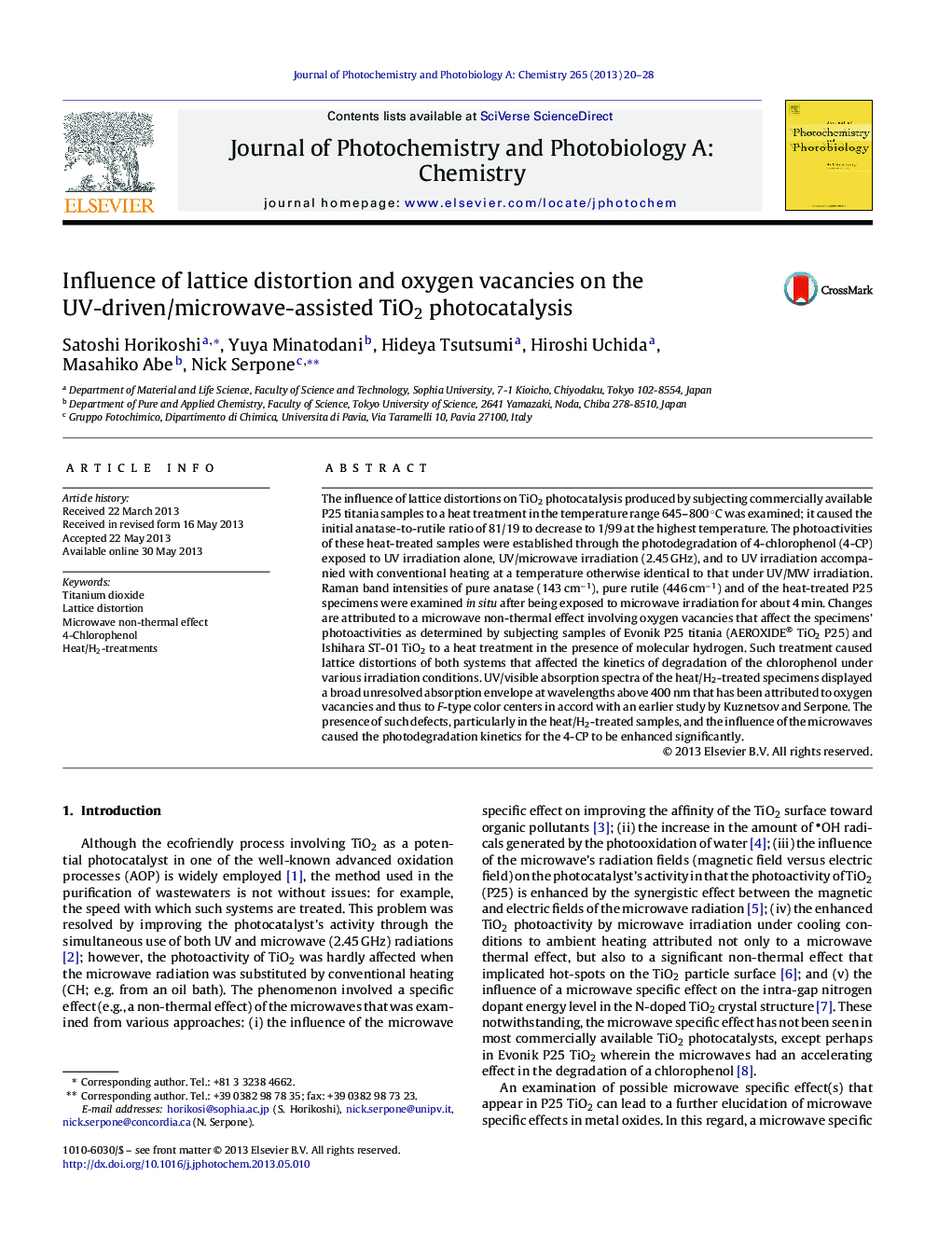| کد مقاله | کد نشریه | سال انتشار | مقاله انگلیسی | نسخه تمام متن |
|---|---|---|---|---|
| 26965 | 43990 | 2013 | 9 صفحه PDF | دانلود رایگان |

• Microwave non-thermal effect on TiO2 photocatalytic activity was examined with respect to the anatase/rutile ratio and crystal lattice distortion.
• Influence of microwaves on TiO2 particles was also examined by in situ microscopic Raman spectroscopy.
• Lattice distortion can have a negative effect on the photocatalytic activity under conventional heating.
The influence of lattice distortions on TiO2 photocatalysis produced by subjecting commercially available P25 titania samples to a heat treatment in the temperature range 645–800 °C was examined; it caused the initial anatase-to-rutile ratio of 81/19 to decrease to 1/99 at the highest temperature. The photoactivities of these heat-treated samples were established through the photodegradation of 4-chlorophenol (4-CP) exposed to UV irradiation alone, UV/microwave irradiation (2.45 GHz), and to UV irradiation accompanied with conventional heating at a temperature otherwise identical to that under UV/MW irradiation. Raman band intensities of pure anatase (143 cm−1), pure rutile (446 cm−1) and of the heat-treated P25 specimens were examined in situ after being exposed to microwave irradiation for about 4 min. Changes are attributed to a microwave non-thermal effect involving oxygen vacancies that affect the specimens’ photoactivities as determined by subjecting samples of Evonik P25 titania (AEROXIDE® TiO2 P25) and Ishihara ST-01 TiO2 to a heat treatment in the presence of molecular hydrogen. Such treatment caused lattice distortions of both systems that affected the kinetics of degradation of the chlorophenol under various irradiation conditions. UV/visible absorption spectra of the heat/H2-treated specimens displayed a broad unresolved absorption envelope at wavelengths above 400 nm that has been attributed to oxygen vacancies and thus to F-type color centers in accord with an earlier study by Kuznetsov and Serpone. The presence of such defects, particularly in the heat/H2-treated samples, and the influence of the microwaves caused the photodegradation kinetics for the 4-CP to be enhanced significantly.
Figure optionsDownload as PowerPoint slide
Journal: Journal of Photochemistry and Photobiology A: Chemistry - Volume 265, 1 August 2013, Pages 20–28